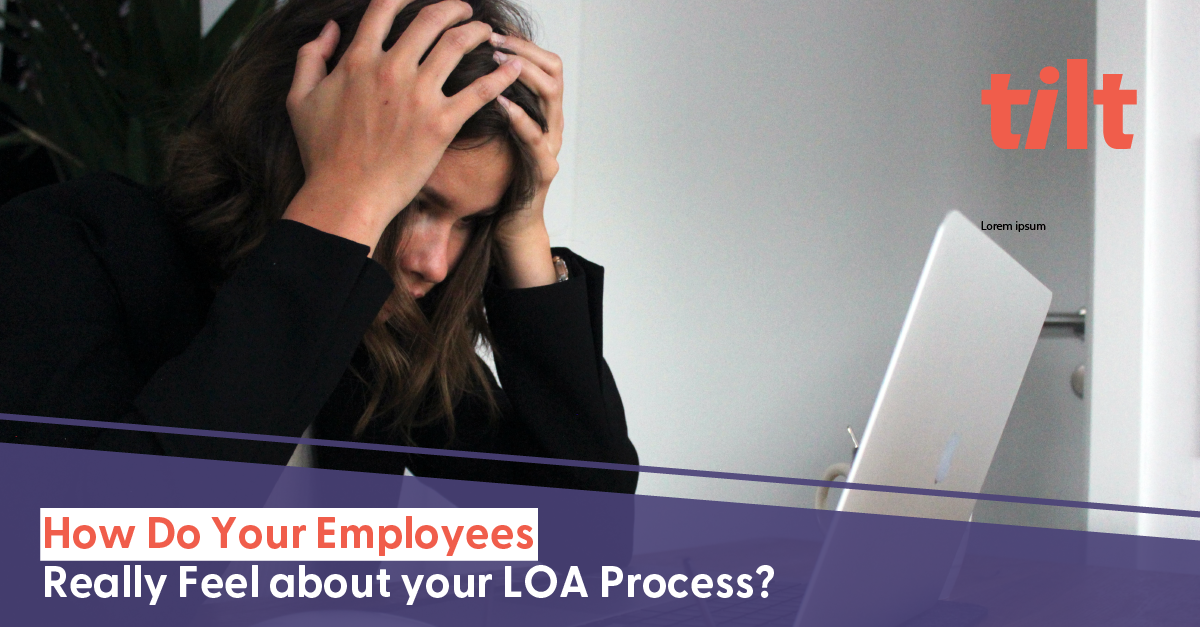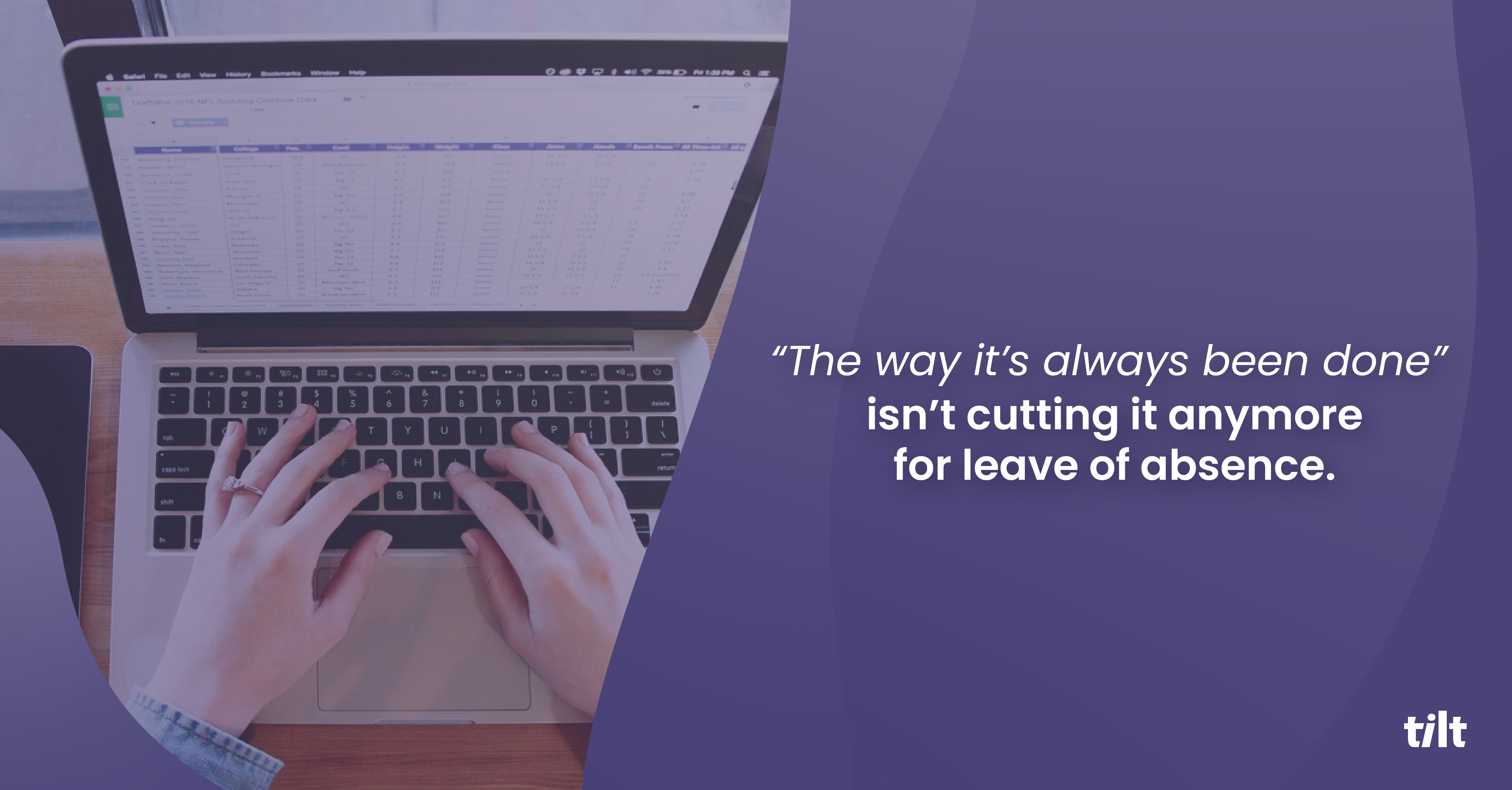As much as we wish it were true, life doesn’t stop throwing curveballs just because we have a job that demands our attention. As employees, we all experience moments where we need to take a break from work to turn our focus and attention toward life, whether it be for mental and physical health issues, extended family circumstances, or bonding with a child (among many other reasons).
When these life events happen, companies that provide their employees with the option to take a leave of absence can be a huge relief. However, not all leave of absence policies and processes are created equal, and whether HR departments know it or not, employees may have serious concerns about the way their organizations manage LOAs and how it impacts their time away from work, as well as their feelings toward their organization itself
Policy clarity
A lack of clarity around your organization’s leave policies is one of the most significant issues that employees may face when it comes to taking a leave of absence. If your leave policies are even somewhat difficult to understand, this can lead to employee frustration, confusion, approval delays, and administrative errors. All of these concerns get amplified if an employee needs to take time off urgently.
Further, if your policies aren’t clearly defined and easy to access, you run the risk of an employee not taking leave simply because they might not know it’s allowed. If your people have a lack of understanding surrounding the support they’re entitled to, they’re left to assume that the support isn’t there at all.
Administrative delays
While some employees who need to take leave can plan far in advance, say, for the birth or adoption of a child, a lack of HR bandwidth can be particularly problematic if an employee needs to take time off urgently, like for a medical emergency. If an employee needs to take leave right away and you don’t have an easy and efficient process in place to accommodate them you run the risk of administering a negative leave experience for them when they need it most.
When a major life event happens and an employee feels like their organization isn’t prepared to support them, it can cause a crack in the foundational trust between them which in many cases can’t be repaired. Supportive streamlined processes that are easy to follow help ensure your people that right out of the gate the last thing that they need to worry about are administrative obstacles that could get in the way of benefits owed to them.
Cancel the call center
If a carrier is currently administering your leaves of absence there is a good chance that when your employee has a question, or needs to know the approval status of a leave, or wants to know what forms need to be filed for state benefits and if they’re filled out correctly, there’s a good chance that what they’ll be met with is a robo-operator coldly telling them to “push 5 to repeat these options.”
Call centers serve a lot of amazing functions in our society, but if you’re an employee who is coming to grips with a maternity leave that suddenly turned into a bereavement leave, the last thing you want to do is navigate a lifeless menu of dial tone options when you really just need someone, a real human, to help you when life feels helpless.
It’s important to ask yourself if your organization is situated to treat the humans you support as humans when life is hardest.
Better know a stigma
The silent killer of any successful LOA experience is stigma. Stigmas surrounding a leave of absence can take many forms. Perhaps you’re going to be a new mother and assumptions are suddenly made about what you’re career motivations will be in the future. Perhaps you’re going to be a new father and the expectations are that you shouldn’t take paternity leave.
While strides are being made, mental health still has rather large stigmas surrounding it, especially as it pertains to taking a leave of absence. According to a report by the World Health Organization (WHO), an estimated 280 million people worldwide suffer from depression, yet many people are hesitant to discuss their mental health concerns with their employers. This can lead to hesitation when it comes to requesting time off.
Educating your employees on the do’s and don’ts of a leave of absence can save more than your relationship with an employee going on leave, it can also keep you out of legal hot water. A manager operating with a stigma-infused, outdated mindset not only puts you at risk of costly turnover but also costly lawsuits if you aren’t careful.
Creating a positive LOA experience
A positive LOA experience can help build trust between employer and employee by making the policy and processes easy to understand, providing support with an empathetic touch, and creating educational awareness to start breaking down stigmas in the workplace.
This is understandably a lot to manage for many HR departments, especially as they’re being asked to do more with less these days. Outsourcing this process to LOA experts can be an effective way to improve in all of the areas listed above while not adding additional responsibilities to a leave manager’s already-overflowing plate.
About Tilt
Tilt is leading the charge in all things leave of absence management through easy-to-use tech and human touch. Since 2017, our proprietary platform and Empathy Warriors have been helping customers make leave not suck by eliminating administrative burdens, keeping companies compliant, and providing a truly positive and supportive leave of absence experience for their people.







